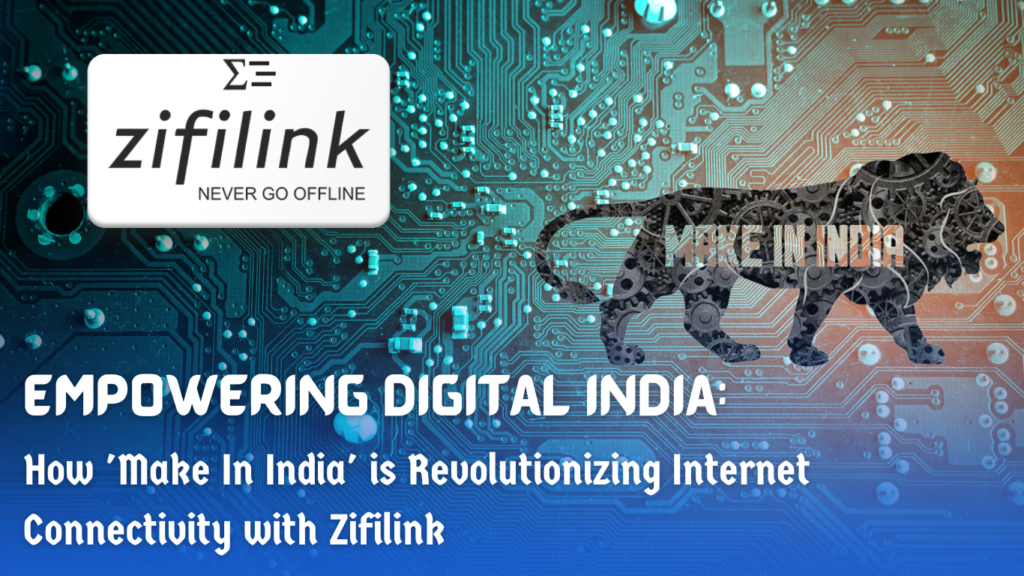
In today’s digital age, live streaming has revolutionized the way we consume content, allowing us to experience major events such as live cricket streaming and football games in real-time, no matter where we are.
But have you ever wondered how these captivating live streams are delivered to a vast audience seamlessly?
Behind the scenes, a sophisticated setup and technical expertise come into play. And stay tuned as we unveil the secret weapon that propels flawless streaming into a realm of unparalleled excitement: Zifilink, an internet-bonding router that takes your streaming game to exhilarating new heights and ensures a flawless streaming experience.
Within this captivating world of live streaming, a carefully orchestrated symphony of technology and expertise converges to deliver a mesmerizing experience to viewers around the globe. Let’s now take a closer look at the crucial elements that form the backbone of professional live streaming and set the stage for unforgettable moments of excitement.
Capturing Device: The foundation of any live stream lies in capturing high-quality video feeds. Professional-grade cameras, video switchers, and HDMI outputs are employed to capture every detail of the event, providing viewers with an immersive experience that brings them closer to the action.
Audio Capture and Mixing: Alongside the video, capturing crystal-clear audio is equally important. Dedicated microphones and audio mixers are utilized to capture the excitement of the crowd and the commentary. Audio processing techniques such as noise reduction, equalization, and audio dynamics processing are employed to ensure optimal sound quality.
Encoders: An encoder is a vital component in the live streaming workflow that converts audio and video signals into a digital format suitable for transmission over the internet. It compresses the data, optimizing it for efficient delivery to viewers in real-time. There are two types of encoders:
-
Software Encoders:
Software encoders are applications that encode the audio and video feeds into a suitable format for streaming over the internet. They utilize the computer’s processing power to compress the media and prepare it for transmission. Popular software encoders include OBS Studio, Wirecast, and vMix, offering a range of features and customization options.
-
Hardware Encoders:
Hardware encoders are standalone devices designed specifically for encoding live video and audio streams. They provide real-time encoding capabilities and are often preferred for their reliability and dedicated processing power. Hardware encoders come in various forms, including portable encoders for on-the-go streaming and rack-mounted encoders for large-scale events.
Internet Connection: A stable and high-speed internet connection is the backbone of professional live streaming. Dedicated internet lines or internet bonding solutions like Zifilink internet bonding router, combine multiple connections to increase bandwidth and provide redundancy. Ensuring uninterrupted streaming without buffering or latency issues.
Live Streaming Protocol: The Real-Time Messaging Protocol (RTMP) is the go-to streaming protocol in the industry. RTMP enables low-latency and adaptive bitrate streaming, allowing the stream to adjust dynamically based on the viewer’s internet connection. This ensures a smooth viewing experience across various devices and network conditions.
RTMP, or Real-Time Messaging Protocol, is a robust TCP-based protocol specifically designed for low-latency audio and video streaming connections. Its primary objective is to optimize the transmission of data by dividing streams into smaller fragments known as packets. These packets are then independently delivered through various virtual channels within RTMP, ensuring the simultaneous and efficient transmission of video and audio data.
On the other hand, UDP, a connectionless protocol, prioritizes speed and is ideal for real-time, interactive applications like live streaming, online gaming, and video chat.
TCP (Transmission Control Protocol) and UDP (User Datagram Protocol) are two different methods of transmitting data over the internet. TCP is a connection-based protocol used in applications that require reliable and error-free data transmission, such as web browsing, email, and file transfers. It establishes a secure communication channel and verifies the receipt of data. On the other hand, UDP is a connectionless protocol used in applications where speed is prioritized over reliability, such as real-time communication, online gaming, and live streaming. Due to its faster transmission and lower latency, UDP is considered more optimal for live streaming, where real-time delivery of data is crucial, even if occasional data loss or errors occur.
Live Streaming Servers: Streaming servers receive the encoded video and audio streams from the encoders and distribute them to viewers. These servers are designed to handle massive concurrent connections, employing load-balancing techniques for efficient content distribution. Robust servers ensure that the stream reaches viewers reliably and without interruptions.
Content Delivery Network (CDN): CDNs play a crucial role in delivering the live stream to viewers worldwide. By caching the stream on geographically distributed servers, CDNs reduce latency and handle high-traffic loads efficiently. This ensures that viewers can access the stream with minimal delay, regardless of their location.
CDNs (Content Delivery Networks) optimize content delivery for a better user experience. Here are the types:
- Standard CDN: Caches static content on edge servers, reducing latency and load on the origin server.
- Video CDN: Specialized for video content, uses streaming protocols for smooth playback.
- Dynamic CDN: Caches dynamically generated content, like personalized web pages, improving delivery efficiency.
- P2P CDN: Utilizes user devices to distribute content, reducing bandwidth usage and improving delivery in limited infrastructure regions.
- Hybrid CDN: Combines multiple CDN technologies for optimized content delivery based on factors like popularity and location.
Each type of CDN offers unique advantages depending on the specific requirements of the content being delivered. By strategically deploying CDNs, organizations can ensure faster and more reliable content delivery, resulting in an improved user experience and increased customer satisfaction.
Video Transcoding: To cater to different devices and network conditions, video transcoding is employed. Transcoding converts the live stream into various resolutions, formats, or bitrates, ensuring compatibility and providing a smooth viewing experience for a diverse audience.
Monitoring and Analytics: To ensure the quality of the live stream, monitoring tools are used to track essential metrics in real-time. Video quality, buffering events, network performance, and viewer engagement are monitored, allowing for prompt issue identification and resolution. Analytics tools provide valuable insights into audience reach, retention, and key performance indicators. Enabling streamers to refine their strategies for future events.
conclusion
Overall, mastering the art of professional live streaming requires a comprehensive understanding of various technical aspects, including capturing devices, encoders, internet connectivity, streaming protocols, and servers. In order to deliver a seamless and high-quality live streaming experience, it is crucial to have a stable and reliable internet connection.
Zifilink, an internet bonding router, enhances the streaming setup by providing the necessary stability and reliability for internet connectivity. By incorporating Zifilink into the streaming workflow, content creators and broadcasters can mitigate buffering issues and ensure uninterrupted streaming, regardless of the location.
By leveraging advanced technology and staying updated with the latest advancements in live streaming, content creators and broadcasters can create immersive and engaging live events that captivate their viewers. With Zifilink as a crucial component in the streaming workflow, streamers can overcome internet connectivity challenges, deliver high-quality streams, and reach a global audience with confidence.
Hope you have found this article informative and engaging. Mastering the art of professional live streaming requires attention to detail, careful planning, and the right technical setup. By integrating Zifilink into your live streaming toolkit. you can elevate your streaming game and deliver captivating experiences that leave a lasting impression. So, gear up, embrace the power of live streaming, and let your creativity shine through the world of digital content.
Remember, the quality of equipment, setup, scripting, planning, and a fast and stable internet connection are crucial elements for mastering live streaming. Embrace the technology, keep exploring new possibilities, and let your live streams create a lasting impact on your audience.
Please like, share, and leave your comments below. We’d love to hear about your live-streaming experiences and any insights you’d like to share.
Happy streaming!
Note: Zifilink is a leading provider of internet bonding solutions, offering reliable and efficient internet bonding solutions.




About The Author: Deepak
More posts by Deepak